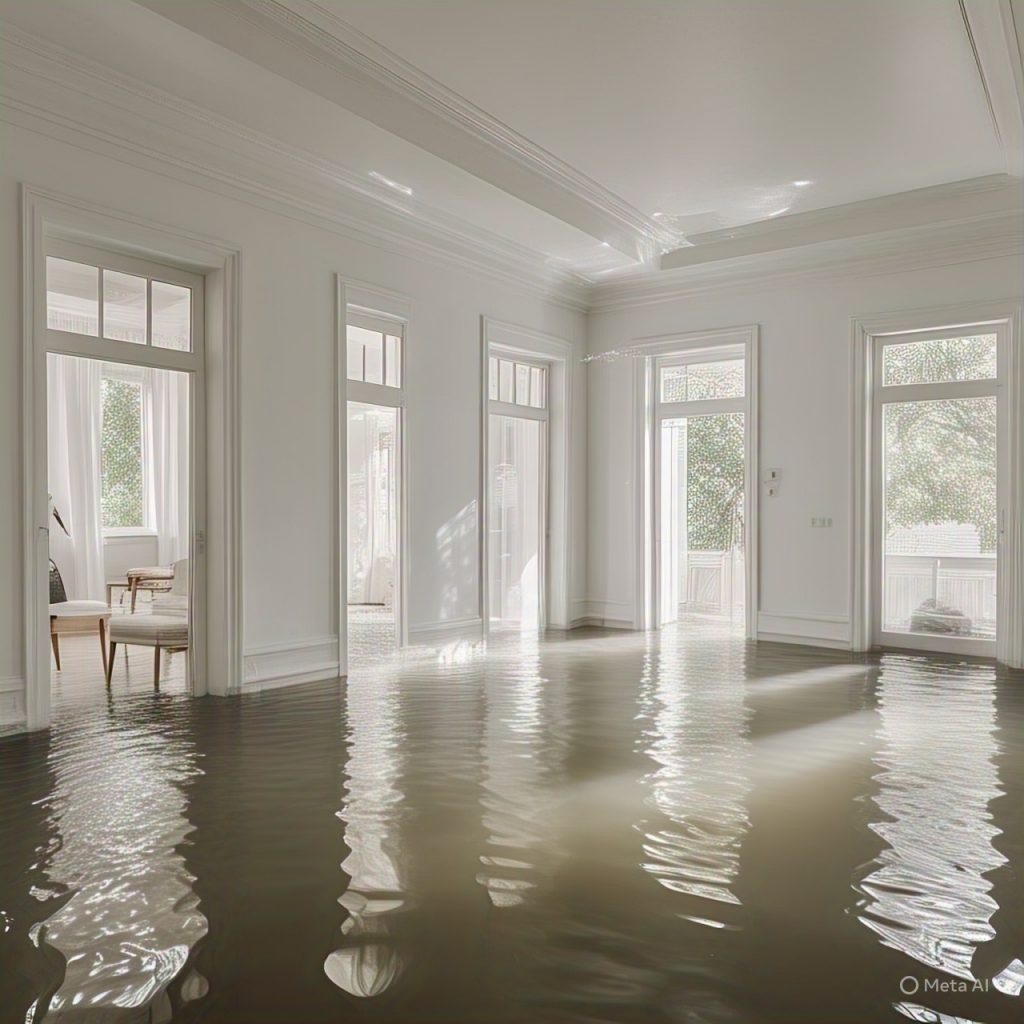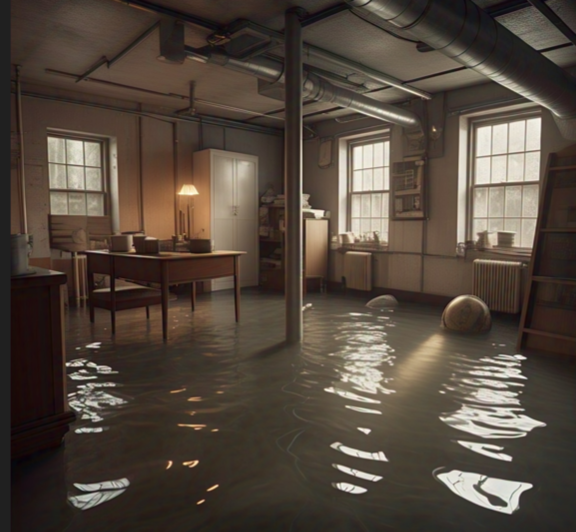Introduction: The Hidden Threat Underfoot of Flood Water Damage
Flood water damage effect: After a storm or unexpected flood, most homeowners rush to dry surfaces, remove wet furniture, and air out the space. But what many don’t realize is that the true danger might be silently festering underneath their feet. Floors especially those made of wood, laminate, or with subfloor layers—are particularly vulnerable to water damage. Left unchecked, this hidden rot can lead to structural issues, health hazards, and thousands in repair costs.
This article explores the unseen consequences of flood water damage, signs your floors might be rotting from the inside out, restoration tips, and what you can do to protect your home. Let’s begin with a cautionary story that hits close to home for many.

Lisa’s Rotting Floor Nightmare
Lisa, a homeowner in Fort Wayne, Indiana, returned home after a family vacation only to find her living room slightly damp. She assumed it was residual moisture from a minor flood that had occurred the week prior. After drying the surface and running fans for a day, everything seemed fine.
Weeks passed.
But one day, Lisa noticed a musty smell in the living room. Her hardwood floor began to warp, and some tiles felt spongy underfoot. When she finally called a restoration professional, the verdict was grim: the subfloor was severely rotted, mold had started growing, and the entire floor needed to be replaced. Her insurance only covered partial damage due to delayed reporting.
The pain point? Lisa’s assumption that drying the surface was enough cost her $12,000 in repairs.
The lesson? Flood water damage doesn’t just dry up. It seeps in and destroys silently.
Why Floors Are So Vulnerable to Flood Damage
- Material Sensitivity: Wood, laminate, and composite floors absorb water easily. Even concrete floors can crack or grow mold when water is trapped below.
- Multiple Layers: Many flooring systems include underlayment, padding, or subflooring, which are perfect breeding grounds for moisture and mold.
- Lack of Immediate Signs: Damage often starts below the surface. By the time you see warping or smell mildew, rot is well underway.

Common Signs Your Floor Is Rotting From the Inside Out
- Musty Odors: Mold and mildew smell earthy, stale, or damp.
- Soft or Spongy Spots: Step on different areas. If it feels like it’s giving way, it probably is.
- Discoloration or Staining: Water marks that keep spreading suggest deeper moisture issues.
- Peeling or Warping: Boards that curl or edges that rise indicate water beneath.
- Increased Allergy Symptoms: Mold spores under your floor can trigger respiratory problems.
For immediate assistance with water damage restoration in Fort Wayne, contact PuroClean Disaster Restoration, Call (+1) 317-467-4436 or (+1) 260-263-9788 for Fort Wayne location.
PuroClean Disaster Restoration has over 19 years of experience in the property restoraton and mitigation industry, with over 100 5 Star reviews on Google serving Indianapolis. Click on this link to see it’s online reviews and ratings.
Restoration Tips: What To Do If You Suspect Water Damage
- Act Immediately: The sooner you begin the drying and evaluation process, the less damage you’ll face.
- Call Professionals: Water damage restoration teams have moisture meters, thermal cameras, and the right drying equipment.
- Remove Floor Layers: Get to the root of the problem by lifting affected tiles, boards, or carpet.
- Dry Thoroughly: Industrial air movers and dehumidifiers are essential. Don’t rely on ceiling fans alone.
- Disinfect: Flood water may carry bacteria. Use antimicrobial treatments.
- Replace as Needed: Some materials can be salvaged, others must be removed for safety.

Prevention Tips: Keep Your Floors Safe from Future Floods
- Install a sump pump with a battery backup.
- Use moisture-resistant underlayment and sealants in high-risk areas.
- Regularly inspect plumbing and home exteriors.
- Elevate furniture and use rugs designed for wet environments.
- Invest in a water detection alarm system.
FAQs: Water Damage, Floor Rot, and Restoration
Q1: How soon can water damage start affecting my floors?
A: Immediately. Within 24-48 hours, moisture can start warping wood and fostering mold growth.
Q2: What types of flooring are most susceptible to rot?
A: Hardwood, laminate, and engineered wood are highly absorbent. Even carpet and its padding can trap moisture leading to subfloor rot.
Q3: Can I repair water-damaged floors myself?
A: Small surface damage may be DIY-able, but internal rot and mold should always be handled by certified professionals.
Q4: Will insurance cover water-damaged floors?
A: It depends. Sudden events (like burst pipes) are often covered, but gradual damage or neglect may not be. Always read your policy and report issues immediately.
Q5: Is mold under the floor dangerous?
A: Yes. Mold spores can lead to respiratory issues, allergic reactions, and worsen asthma. It also damages your home’s structure.
Q6: How can I tell if my subfloor is damaged?
A: Look for sagging floors, uneven surfaces, or damp spots that never fully dry. A professional moisture inspection is the best route.
Q7: Can water damage be prevented entirely?
A: Not entirely, but you can minimize risk with proper drainage, sump pumps, regular inspections, and waterproof materials.
Q8: What should I do if I detect a musty smell but no visible damage?
A: That smell could signal hidden mold. Call a professional to conduct a thorough assessment.
Q9: How long does floor restoration take?
A: It varies. Drying may take 3–7 days, and full restoration (including replacing materials) can take 1–2 weeks depending on severity.
Q10: Who should I call for help with water-damaged floors in Fort Wayne?
A: Contact PuroClean Disaster Restoration of West Fort Wayne for a professional, fast, and reliable service.
Conclusion: Don’t Wait Until It’s Too Late
Flood water doesn’t just disappear. It lingers, spreads, and slowly destroys your home from within. If you think your floors might be rotting from the inside out, act fast. What you can’t see can cost you more than money—it can risk your health and safety.
Stay informed, act quickly, and trust local professionals like PuroClean Disaster Restoration of West Fort Wayne to protect your home from the bottom up.

 PuroClean Disaster Restoration of West Fort Wayne
PuroClean Disaster Restoration of West Fort Wayne